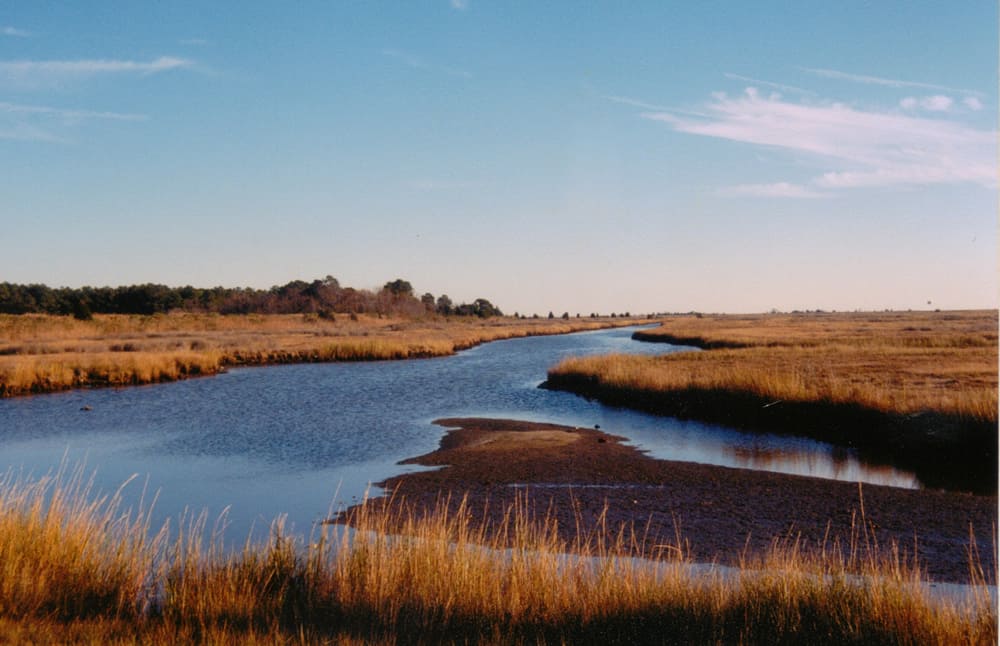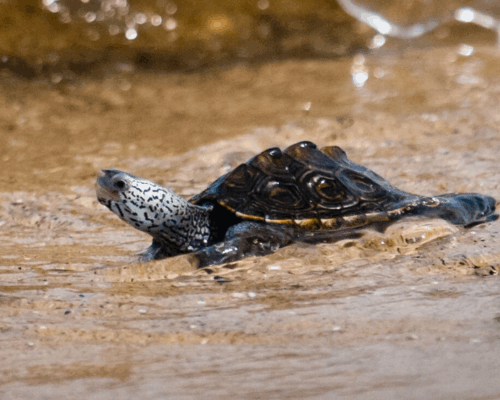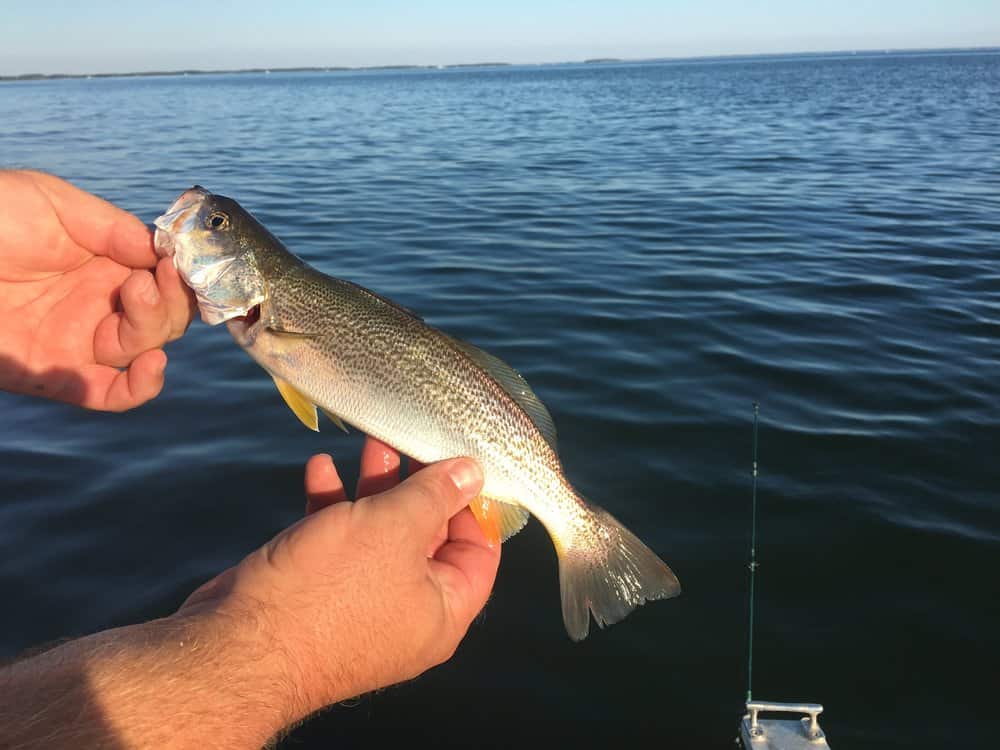Cedar Island WMA is all-in-one for fishing, hunting, birding, and proggin’.
Asking me to pick my favorite place on the Chesapeake Bay is like asking me to choose my favorite dog. Ok, that’s a bit too emotional for me, so let’s say picking a preferred ice cream or beer. It’s an impossible task, but editors seem to relish issuing these kinds of propositions.
Truth be told, it was actually a fun exercise to pare down my extensive list of eligible candidates for this column. And seeing how this isn’t a congressional hearing, I can always change my mind, right?
Many places rank high on my list of preferences. From forests to freshwater streams to salt marshes, there are endless possibilities. But deadlines are deadlines even amidst the awesome fall fishing that has diverted my focus. So here you have it, my friends. (Next year I could very well have a new favorite.)
Cedar Island Wildlife Management Area
I have a deep affection for places only accessible by water, and the barrier islands of Tangier Sound fit that bill to a tee—none more so than Cedar Island WMA, a 3,000-acre swath of undeveloped public land just above the Maryland-Virginia line. Comprised of tidal marshes, hidden ponds and deep channels, its secrets run just as deep.
For about a dozen years, I was fortunate enough to get permission to make base camp at Fox Island Lodge, the legendary former duck lodge which until recently was an education center owned and operated by the Chesapeake Bay Foundation. In the fall of 2019, the foundation sold Fox Island to a private citizen. The end of an era for sure.
Some of my most memorable hunting adventures occurred in Cedar Marsh. Setting up rafts of decoys off Refrigerator Point, Green Harbor, Watkins Point, or inside Dallas’ Gut or Laurie’s Gut, are logged into my hippocampus. More than once, a traitorous tide forced me to slog through knee-deep marsh muck. I’ve hunkered down among black needlerush and saltmeadow cordgrass to try and temper the effects of bone-chilling winds, the kind that brings tears to your eyes.
Maybe that’s what I love about the place, no two weather days are alike. Once, after a long day of duck hunting, as dusk approached, the wind tore across the sound so fiercely it kicked up spray that stung my eyes like salt pellets. We had only about a mile to go to reach the shelter of the lodge when menacing clouds billowed in the distance and thunder boomers resonated across the sound like sheet metal being pounded by an amped-up Keith Moon.
Amid this chaos, I watched what I thought was a waterspout forming. As we edged closer it turned out to be a massive flock of redhead ducks lifting from the water. I roared at the brewing storm, hoopin’ and hollerin’ out of sheer awe for its power. As I secured the boat to a piling, pearl-sized hail spit from the sky. Later, the night sky became so clear you could see the dwarf-star Alcor along the Big Dipper’s handle.
Memorable highlights include majestic pintails boldly tolling to our rig, and dozens of gadwall buzzing our blind, pushed by winds so strong that a slight cupping of their wings was all it took for them to flair out of range; and an odd couple—a black duck and drake mallard—sneaking from behind, both of which fell for our feint; and a gorgeous canvasback drake gliding in, framed by a winter sunset with its chestnut-red head set off by its glossy, black chest.
Angler’s Delight
The piscatorial pulse of the Chesapeake runs deep through Tangier Sound and Cedar Marsh. For the skinny water angler, it’s about as close to perfection as you can get—clean water, rich habitats, abundant forage and, most importantly, plentiful gamefish.
Tossing a paddle-tailed lure along the grassy marsh point on the Sound side was where I caught my first bragging-size speckled trout. In deeper waters, kingfish, flounder, bluefish, and red and black drum are distinct possibilites. Evening fishing for croakers (hardheads) and other bottom fish ranks high for me here.
In the 1990s, it was primarily locals who prowled the submerged stump fields and grass flats in search of speckled trout, puppy drum, and rockfish. Today, the secret is out, and avid anglers trailer their boats to Crisfield or trek across the Bay to fish the area.
Don’t Hunt or Fish?
You don’t need to fish or hunt to enjoy Cedar Island, but it helps. Wildlife watching and photography can be superb with ample opportunities to observe oystercatchers and skimmers, plovers and pelicans. In colder months, this uninhabited island draws an abundance of waterfowl including redheads, scaup, and buffleheads. Barn owls use the nesting boxes placed in the marsh by Maryland Department of Natural Resources.
Porpoises and even sea turtles roam the open waters. Sightseeing by boat is always fun. Roaming the beaches (called proggin’ by locals) can reveal arrowheads and sea glass. Solitude is easy to find here.
Getting There
The run from the Little Annemessex River in Crisfield to Cedar Marsh is relatively easy. Great Point on the north end is about two miles from Somers Cove. To get to the south end via Broad Creek, it’s at least twice as long, but still only perhaps a half-hour or less for most fishermen running center consoles. Launching from Jenkins Creek is also an option.
Public ramps on Virginia’s Eastern Shore include Town Landing in Onancock or the landing on Chesconessex Creek. Watts and Tangier islands are doable from Cedar Marsh, making this trifecta of shorelines a reliable bet for light tackle and fly fishermen.
You can access Cedar Island WMA seven days a week throughout the year. During waterfowl hunting seasons, however, it can draw a crowd. In my experience, early fall through early summer are the best times for most folks to visit, not only because the weather is fair, but it’s your best bet to avoid the legendary biting greenhead flies, mosquitoes, and ticks.
The area is designated a Maryland State Wildland due to its pristine status. Therefore, camping is not allowed.
Cedar Island WMA and its Bay islands are magical and wild places. I am fortunate to have enjoyed basking in their charms.





